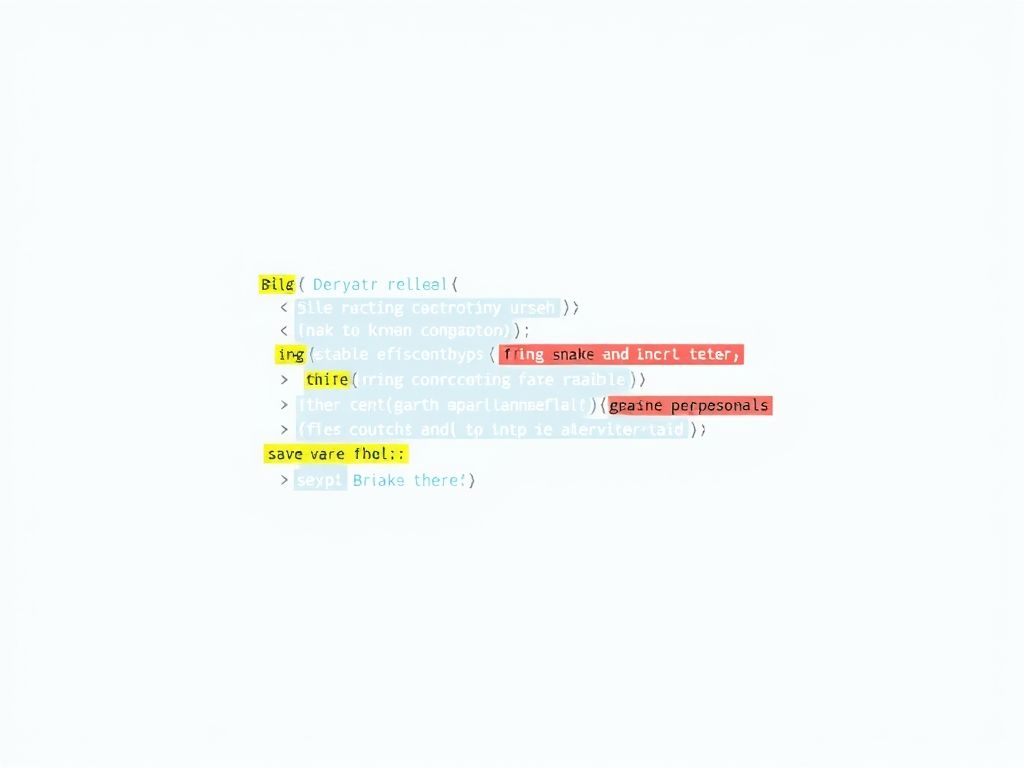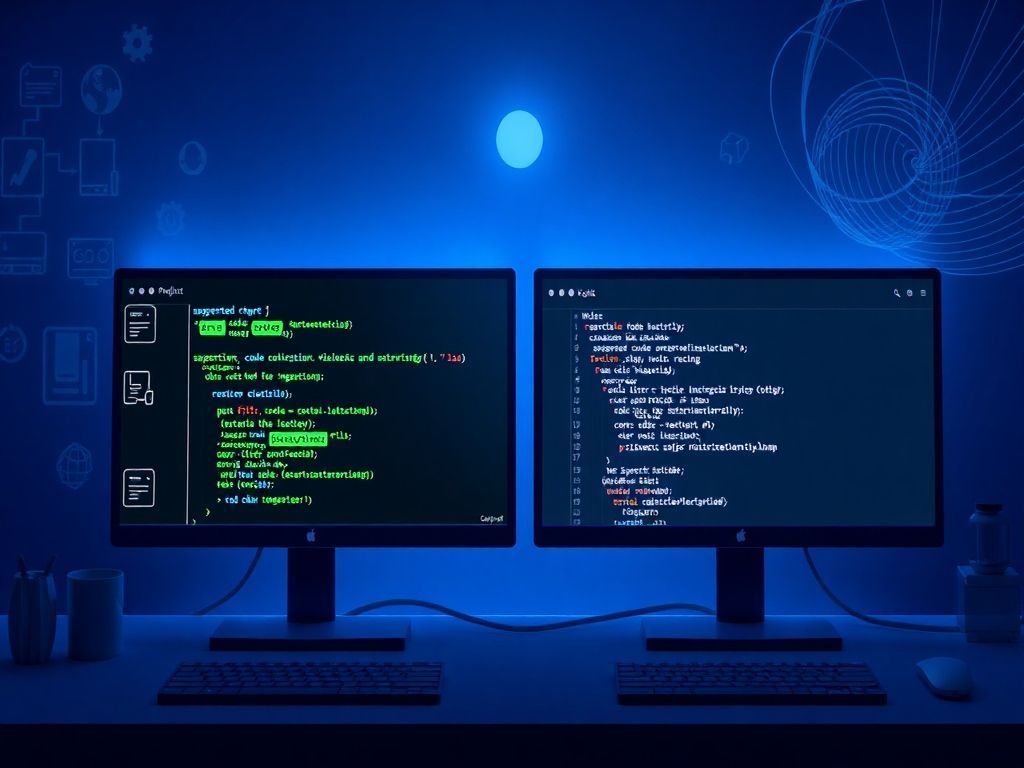Viết code sạch là chìa khóa cho sự phát triển bền vững của dự án phần mềm. Bài viết này sẽ chia sẻ 10 tips code sạch giúp bạn trở thành lập trình viên giỏi hơn, nâng cao hiệu quả làm việc và giảm thiểu lỗi trong quá trình phát triển.
Hiểu rõ Code Sạch là gì?
Understanding what clean code truly means is fundamental for any aspiring programmer, especially those aiming to be a *giỏi* (skilled) developer. Clean code isn’t just about making your code look pretty; it’s about making it understandable, maintainable, and extensible. It’s a crucial aspect of *tips lập trình* (programming tips) that significantly impacts the long-term success of any software project.
So, what exactly is clean code? At its core, clean code is code that is easy to read, easy to understand, and easy to modify. It’s code that is written with clarity and intention, minimizing ambiguity and complexity. Think of it as writing code that another developer (or even your future self) can pick up and immediately grasp its purpose and functionality without spending hours deciphering it.
Why is clean code so important? The benefits are numerous and far-reaching.
- Reduced Maintenance Costs: Clean code is easier to maintain and debug. When code is well-structured and understandable, it takes less time and effort to fix bugs or add new features. This translates directly into lower maintenance costs over the lifespan of the software.
- Improved Collaboration: In most software development environments, developers work in teams. Clean code makes it easier for team members to collaborate effectively. When everyone can understand the code, they can contribute more efficiently and avoid introducing errors.
- Increased Productivity: Writing clean code might seem slower initially, but it actually increases productivity in the long run. When code is easy to understand, developers can spend less time debugging and more time building new features.
- Enhanced Reliability: Clean code is less prone to errors. When code is well-structured and easy to test, it’s easier to identify and fix potential problems before they cause serious issues. This leads to more reliable and stable software.
- Better Code Reusability: Clean code is often more modular and reusable. When code is written in a clear and concise manner, it’s easier to extract and reuse components in other parts of the application or in other projects altogether.
- Professionalism and Reputation: Writing clean code is a sign of professionalism. It demonstrates that you care about the quality of your work and that you are committed to producing code that is not only functional but also maintainable and understandable. For a *lập trình viên giỏi* (good programmer), clean code is a hallmark of their skill.
What are the key characteristics of clean code? Here are some of the most important:
- Readability: Clean code should be easy to read and understand, even for someone who is not familiar with the codebase. This means using meaningful variable and function names, writing clear and concise comments, and following consistent coding conventions.
- Simplicity: Clean code should be as simple as possible. Avoid unnecessary complexity and strive to write code that is easy to understand and maintain. Keep functions short and focused, and avoid deeply nested conditional statements.
- Testability: Clean code should be easy to test. This means writing code that is modular and decoupled, and that can be easily tested in isolation. Writing unit tests is an essential part of writing clean code.
- Maintainability: Clean code should be easy to maintain and modify. This means writing code that is well-structured and documented, and that follows consistent coding conventions.
- Extensibility: Clean code should be easy to extend with new features or functionality. This means writing code that is modular and decoupled, and that can be easily extended without breaking existing functionality.
The journey to writing clean *code sạch* (clean code) is a continuous process of learning and refinement. It requires dedication, discipline, and a willingness to learn from others. By embracing the principles of clean code, you can become a more effective and respected developer.
The next chapter will delve into specific *tips lập trình* (programming tips) that can help you write cleaner code. These “10 Tips Code Sạch cho Lập trình viên” will provide practical guidance and examples to help you improve your coding skills and become a *lập trình viên giỏi* (skilled programmer).
Here’s the chapter content:
10 Tips for Clean Code for Programmers
Building upon our understanding of what constitutes clean code, let’s delve into 10 practical tips that can significantly elevate your programming skills and transform you into a more proficient and sought-after programmer. These *tips lập trình* are designed to be immediately applicable, enhancing both code readability and maintainability. Mastering these techniques will contribute greatly to writing *code sạch*.
1. **Use Meaningful and Descriptive Variable Names:**
One of the cornerstones of clean code is clarity. Vague or cryptic variable names hinder understanding. Choose names that clearly indicate the variable’s purpose.
Example:
Bad: `int d;` // what does ‘d’ mean?
Good: `int daysSinceLastUpdate;`
This immediately clarifies the variable’s role. This is crucial for writing *code sạch*.
2. **Write Comprehensive and Updated Comments:**
Comments should explain the *why* behind the code, not just the *what*. Avoid redundant comments that simply reiterate the code itself. Keep comments updated to reflect any changes in the code.
Example:
Bad: `i = i + 1; // increment i` (obvious)
Good: `i = i + 1; // Increment the counter to track the number of processed files` (explains the purpose)
3. **Leverage Supporting Libraries:**
Don’t reinvent the wheel. Utilize well-established libraries for common tasks. They are often optimized for performance and security, saving you time and effort.
Example: Instead of writing your own sorting algorithm, use the built-in `Arrays.sort()` in Java or `sorted()` in Python.
4. **Optimize Code Structure:**
A well-structured code base is easier to understand and maintain. Break down complex tasks into smaller, manageable functions or methods. Use consistent indentation and spacing.
Example: Refactor a large function into several smaller, more focused functions.
5. **Implement Effective Error Handling:**
Anticipate potential errors and handle them gracefully. Use try-catch blocks (or equivalent) to prevent crashes and provide informative error messages.
Example:
“`java
try {
// Code that might throw an exception
} catch (IOException e) {
System.err.println(“Error reading file: ” + e.getMessage());
}
“`
6. **Adhere to Naming Conventions:**
Consistency in naming conventions is vital. Follow established conventions for your programming language (e.g., camelCase for variables in Java, snake_case in Python).
7. **Employ Design Patterns:**
Design patterns are reusable solutions to common software design problems. Using patterns like Singleton, Factory, or Observer can improve code structure and maintainability.
8. **Embrace Object-Oriented Programming (OOP) Principles:**
If applicable, leverage OOP principles like encapsulation, inheritance, and polymorphism to create modular, reusable, and maintainable code. *Tips lập trình* often include mastering OOP.
9. **Conduct Unit Testing:**
Write unit tests to verify that individual components of your code work as expected. This helps catch bugs early and ensures code reliability.
10. **Perform Integration Testing:**
After unit testing, perform integration tests to ensure that different parts of your system work together correctly. This verifies the interaction between modules and helps uncover integration issues. This is essential for any *lập trình viên giỏi*.
By consistently applying these 10 tips, you’ll not only improve the quality of your code but also enhance your overall programming skills. Remember, writing clean code is a continuous process of learning and refinement. Striving for *code sạch* is a hallmark of a truly skilled programmer.
Applying Clean Code in Practice
Let’s delve into how to apply the 10 clean code tips discussed previously in a real-world programming project. Imagine we’re developing an e-commerce platform. This example will illustrate the benefits of clean code in maintenance, development, and team collaboration.
Consider a module responsible for calculating shipping costs. Initially, the code might be convoluted and difficult to understand. By applying clean code principles, we can significantly improve its readability and maintainability.
1. Meaningful Names: Instead of variable names like `x` or `temp`, we use descriptive names like `shippingCost`, `orderTotal`, and `destinationAddress`. This makes the code self-documenting. For instance, `if (orderTotal > FREE_SHIPPING_THRESHOLD)` is far clearer than `if (x > 100)`.
2. Functions Do One Thing: We break down the shipping calculation into smaller, focused functions. Instead of one large function, we have `calculateBaseShippingCost()`, `applyDiscount()`, and `calculateTax()`. Each function is responsible for a specific task. This aligns with the single responsibility principle, making the code easier to test and debug.
3. Comments When Necessary: While self-documenting code minimizes the need for comments, complex logic or edge cases still require explanation. For example:
“`html
“`
However, avoid redundant comments like `// Set shipping cost to 0; shippingCost = 0;`.
4. Use Supporting Libraries: Leveraging well-established libraries can streamline development and reduce the risk of introducing bugs. For instance, instead of writing custom date/time handling code, use a library like Moment.js or date-fns. This promotes code reuse and reduces complexity.
5. Optimize Code Structure: Refactor the code to improve its structure and readability. For example, use guard clauses to handle error conditions early and simplify the main logic flow. Avoid deeply nested loops and conditional statements.
6. Adhere to Naming Conventions: Consistent naming conventions are crucial. For example, use camelCase for variable names, PascalCase for class names, and UPPER_SNAKE_CASE for constants. This makes the code more predictable and easier to understand.
7. Design Patterns: Implement appropriate design patterns to solve common problems. For example, use the Strategy pattern to handle different shipping methods (e.g., ground, express, overnight). This promotes code reusability and maintainability.
8. Object-Oriented Programming (OOP): Utilize OOP principles to structure the code into reusable components. Create classes for `Order`, `ShippingAddress`, and `ShippingCalculator`. This promotes encapsulation, inheritance, and polymorphism, making the code more modular and extensible.
9. Unit Testing: Write unit tests to verify the correctness of each function and class. For example, test `calculateBaseShippingCost()` with different weights and distances. This helps catch bugs early and ensures that the code behaves as expected.
10. Integration Testing: Perform integration tests to ensure that different modules work together correctly. For example, test the entire shipping calculation process, from order placement to shipping cost calculation.
Benefits of Clean Code
The benefits of applying these tips lập trình are substantial:
* Maintainability: Clean code is easier to understand and modify, reducing the time and effort required for maintenance.
* Development: Clean code accelerates development by making it easier to add new features and fix bugs.
* Team Collaboration: Clean code facilitates collaboration by making it easier for team members to understand and contribute to the codebase. New team members can quickly grasp the logic and start contributing effectively.
The Importance of Teamwork with Clean Code
Working as a team, code sạch becomes even more critical. Clear, well-documented code allows developers to seamlessly integrate their work, resolve conflicts efficiently, and maintain a consistent coding style. Code reviews become more effective, leading to higher-quality software. A lập trình viên giỏi understands that writing clean code is not just about personal preference; it’s about facilitating teamwork and delivering a robust, maintainable product. When everyone adheres to clean code principles, the project benefits from reduced technical debt, improved communication, and increased overall efficiency.
Conclusions
Code sạch không chỉ giúp dự án phần mềm được phát triển tốt hơn mà còn giúp lập trình viên nâng cao kỹ năng, tăng hiệu suất làm việc và giảm thiểu lỗi. Bằng việc áp dụng các tips code sạch, bạn sẽ trở thành một lập trình viên giỏi hơn.











